NYC’s Forgotten ‘War on Christmas Trees’
Discover how an obscure holiday crackdown affects festive street vendors today!


A sculpture by Mark di Suvero (Paintbrush) in foreground, with Santiago Calatrava’s S7 in background
One of the best ways to see modern art in New York City is a pretty well-contained secret. The Pratt Institute Sculpture Park in Brooklyn is completely free and full of amazing, world class art. Over 65 pieces of large-scale sculptural work by notable artists like Santiago Calatrava, Tony Rosenthal and Mark di Suvero, are spread across the 25-acre school campus. David Weintraub, the creator and curator of the Sculpture Park describes the collection as such: “Our choices for the Sculpture Park are motivated by a search for the strongest of works, no matter the style. I liken the Sculpture Park to a symphony; our challenge is to bring all of the parts in harmony.”
And that harmony is evident on a walk through the lush green campus, surrounded by stately brick buildings, as well as more modern ones. On a hot day, the tree canopy provides a respite from the surrounding urban grid. The sculptures are spread across three courtyards, but also sometimes tucked behind buildings or along the periphery of the campus. The works are on loan from faculty, graduates, and emerging artists. Some have already rotated out, including a rusted steel LOVE sculpture by Robert Indiana that was once there.

The fact that this sculpture park is free and open to the public falls in line with the original ethos of Pratt Institute, which was founded by industrialist Charles Pratt. His intent was to offer affordable education to everyone, and from the outset the school which opened in 1887 was open to students of any gender, class, or color. The curriculum focused on training for the industrial revolution, particularly in the fields of engineering and design.

S7 by Santiago Calatrava
The Pratt Institute Sculpture Park is like New York City’s own urban Storm King, and in fact, Mark di Suvero whose yellow paintbrush makes quite an impact here has work at the Hudson Valley sculpture park.

Paintbrush by Mark di Suvero
The bench works are certainly the most whimsical in the Sculpture Park. Tony Rosenthal, who created Astor Place’s famous Alamo Cube, has an untitled piece reminiscent of Mondrian and doubles as a bench. Alan Wexler’s Pratt Desk is inspired by puppeteering in which a hanging red desk is supported by metal scaffolding. Cathey Billian’s Whispering Bench — Texting takes a traditional park bench design but brings it to an extreme point, almost wrapping around itself. And George Sugarman’s Bench is so comfortable, a woman was full on taking a nap on our last visit.
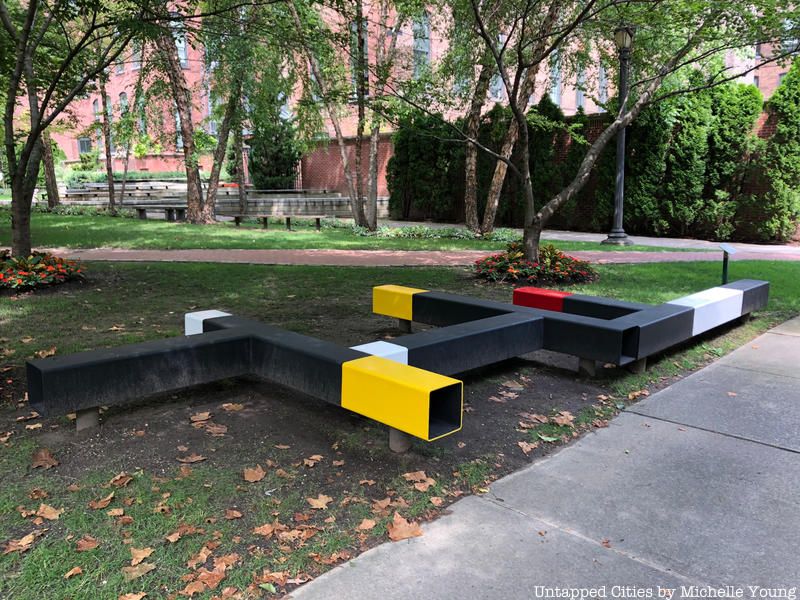
Untiled by Tony Rosenthal
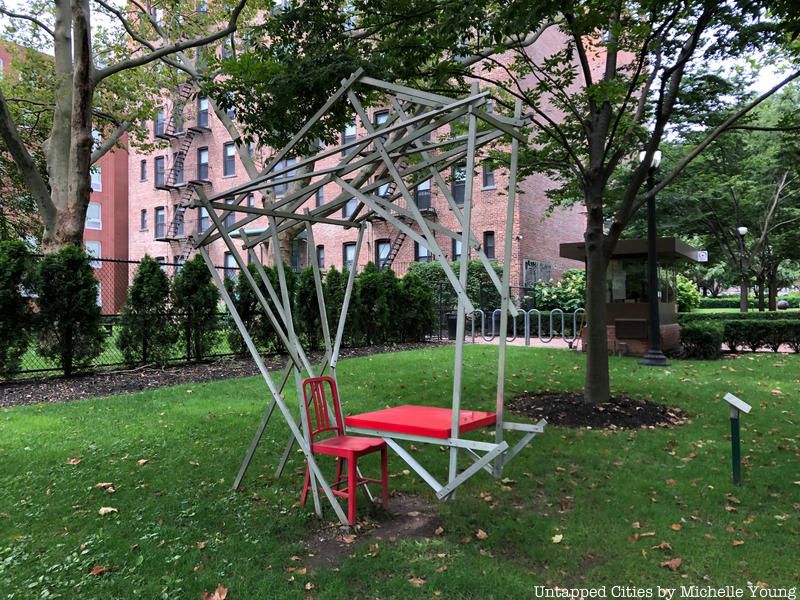
Pratt Desk by Alan Wexler

Whispering Bench — Texting by Cathey Billian

Bench by George Sugarman
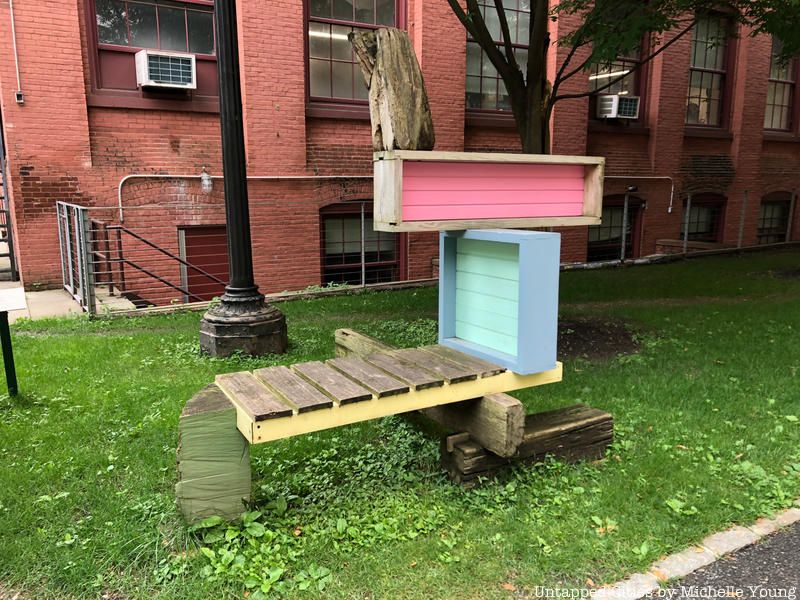
Jim Butte, Compass II
Other pieces are small scale, like Dana L. Stewart’s Sitting On His Laurels, a bronze squirrel with rather oversized hind legs and a long tail. Another piece, Siah Armajani’s Picnic Table, blends in with the functional furniture.

Here are more works to see inside the Pratt Institute Sculpture Park:

Beverly Pepper’s Double Sbalzo
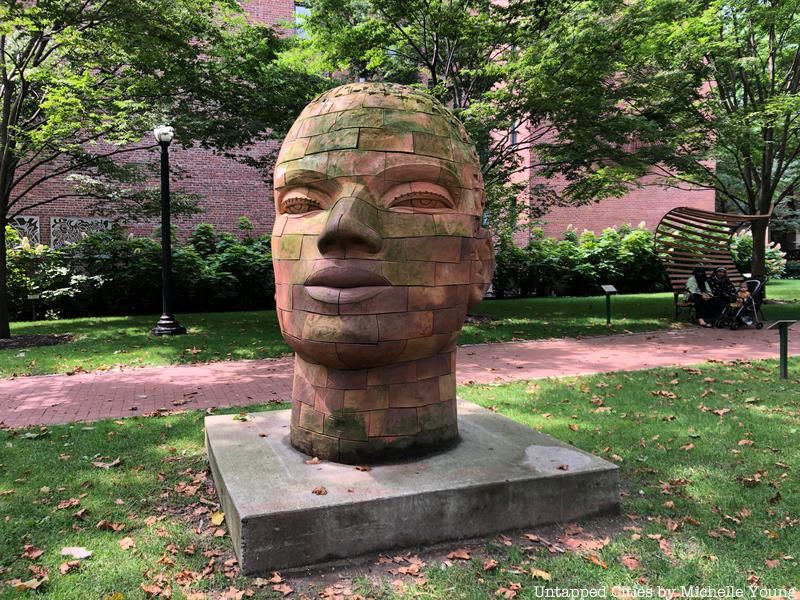
James Tyler’s Brickhead: Yemanga
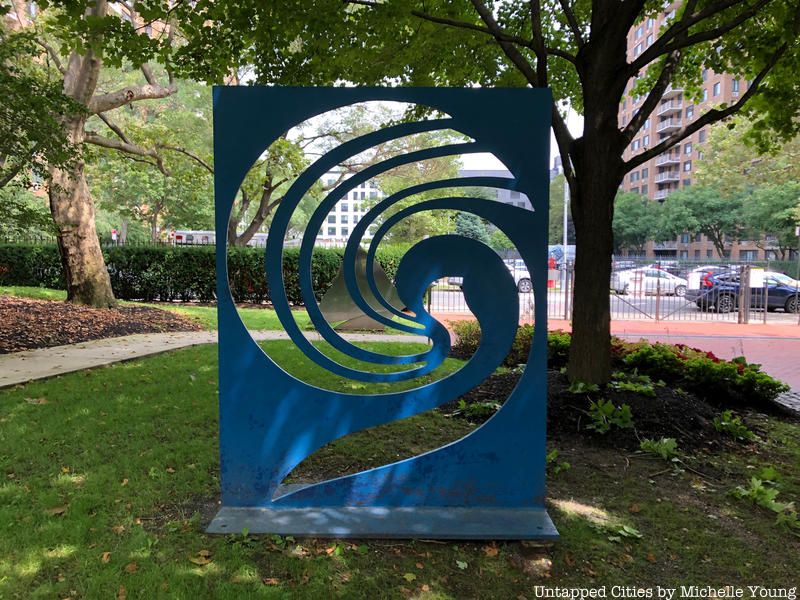
Jack Youngerman’s Swirl, which sits next to another work of his, Hokusai Wave

An untitled work by Sung Na Hao, where the Robert Indiana LOVE once was
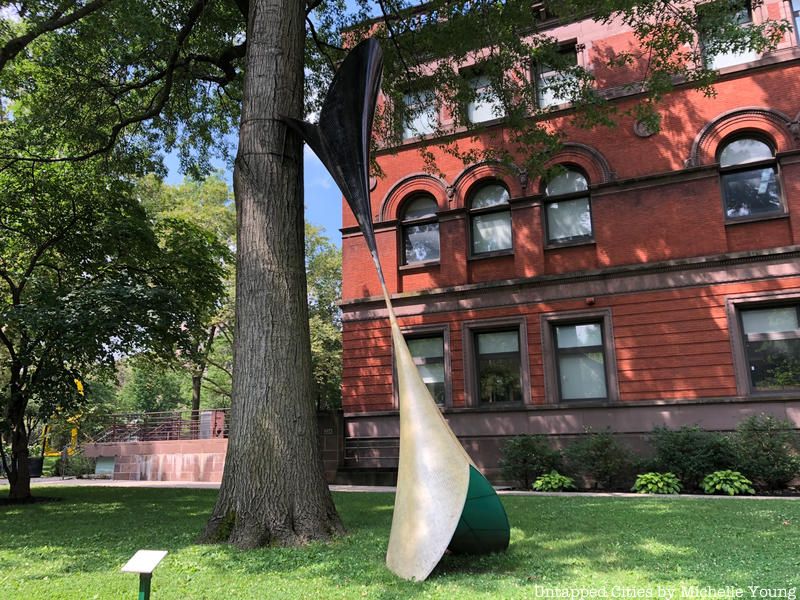
David Henderson’s Skylark


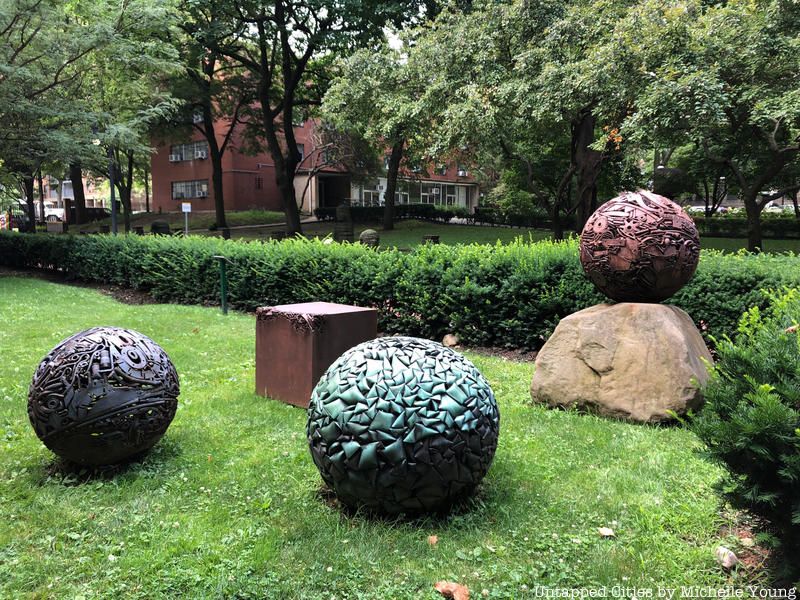

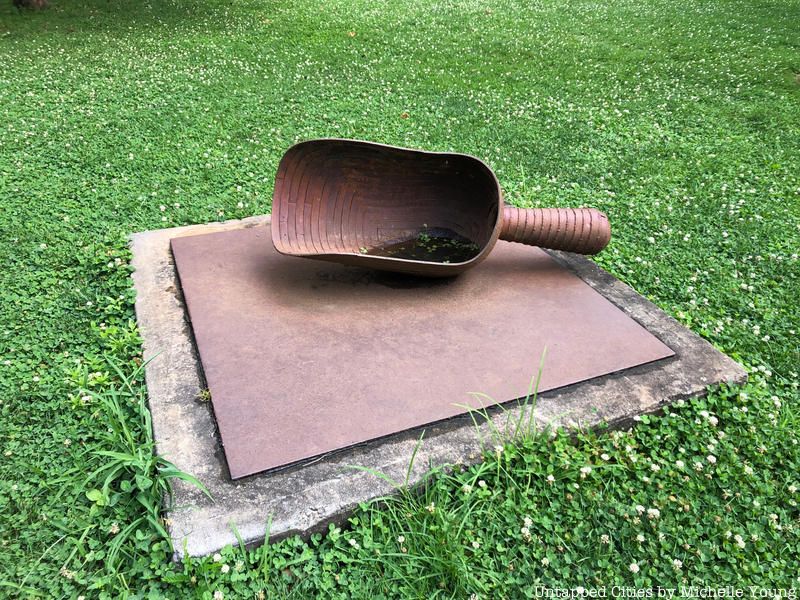





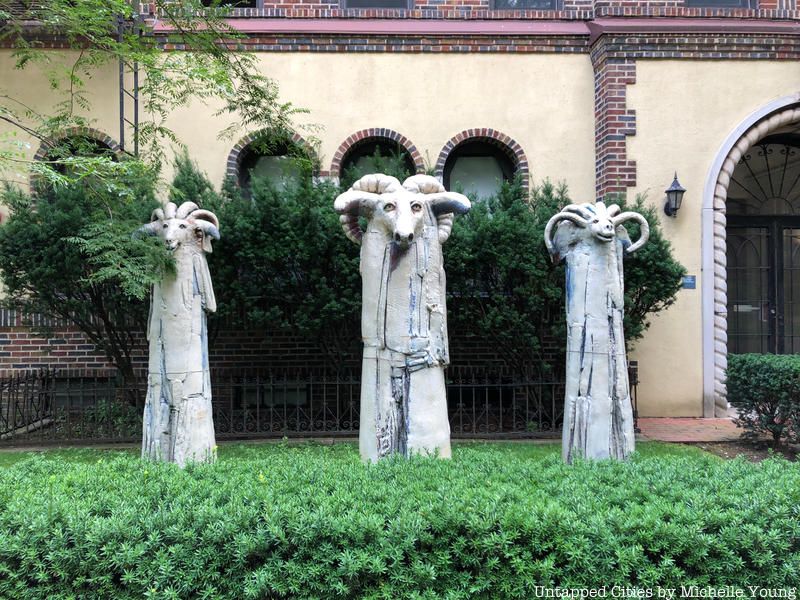
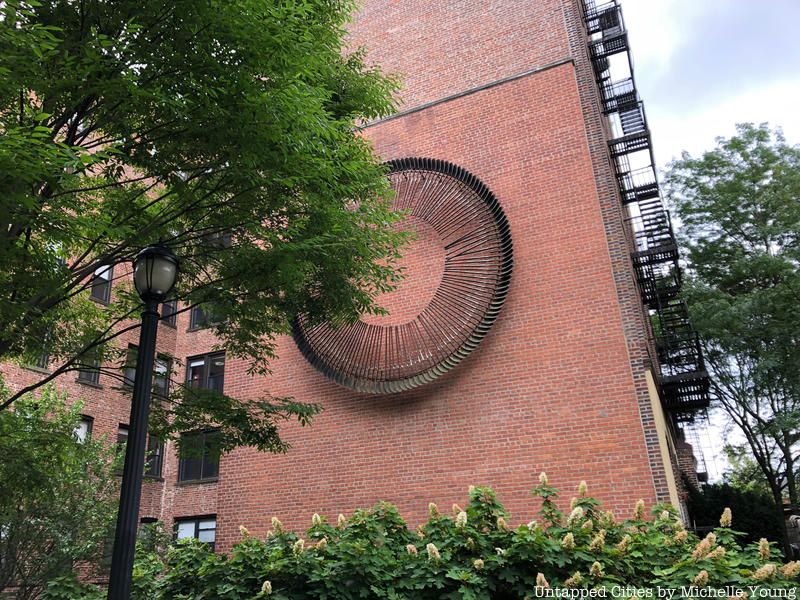
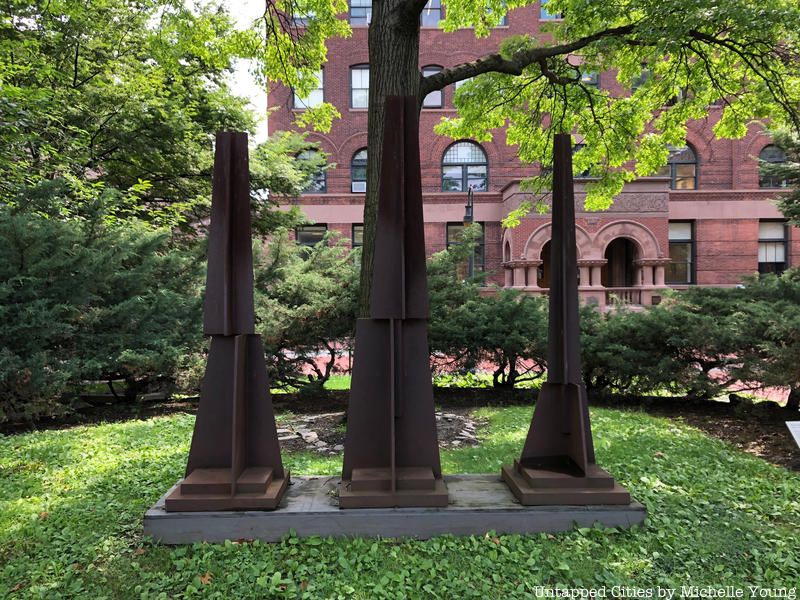
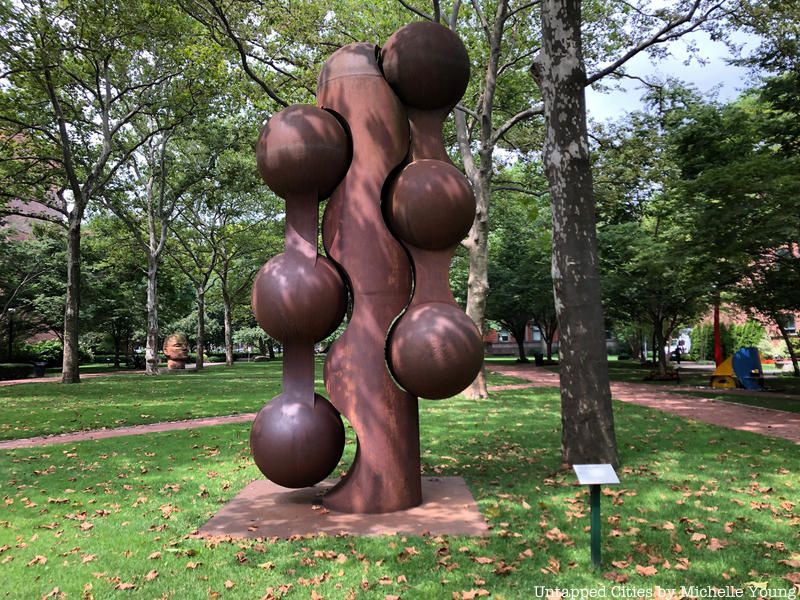

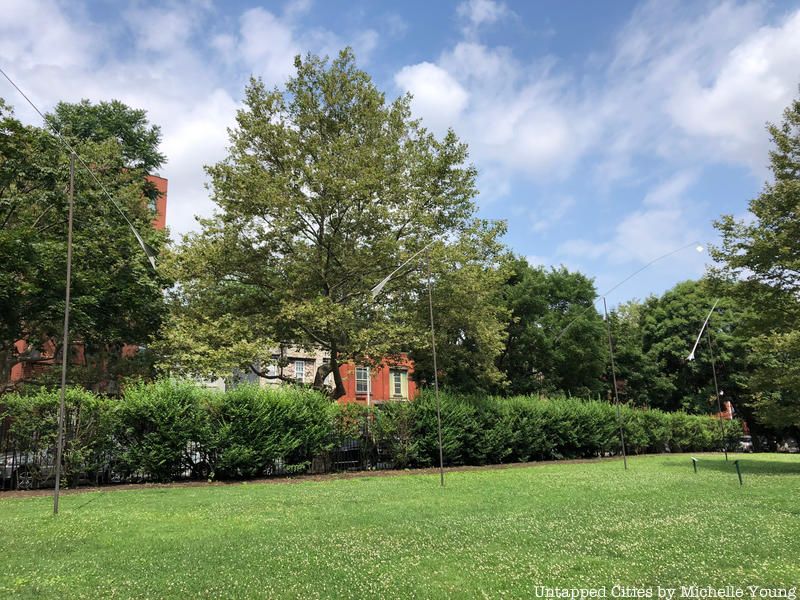

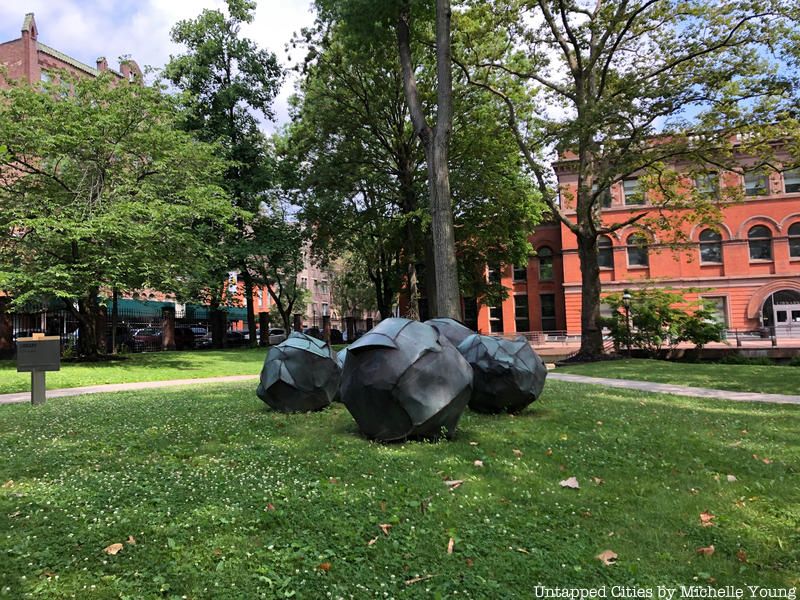



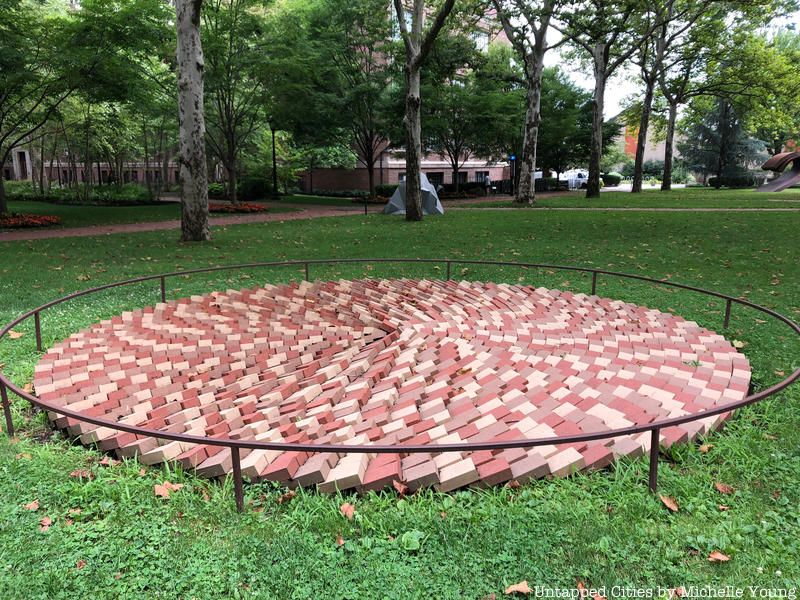
Access the Pratt Institute Sculpture Park from the corner of Dekalb and Hall Street (there’s a security guard, but don’t worry), or from Willoughby and Gerard avenues.
Next, check out 17 Must-Visit Places in Nearby Fort Greene, Brooklyn and check out the art installations not to miss in NYC this month.
Subscribe to our newsletter